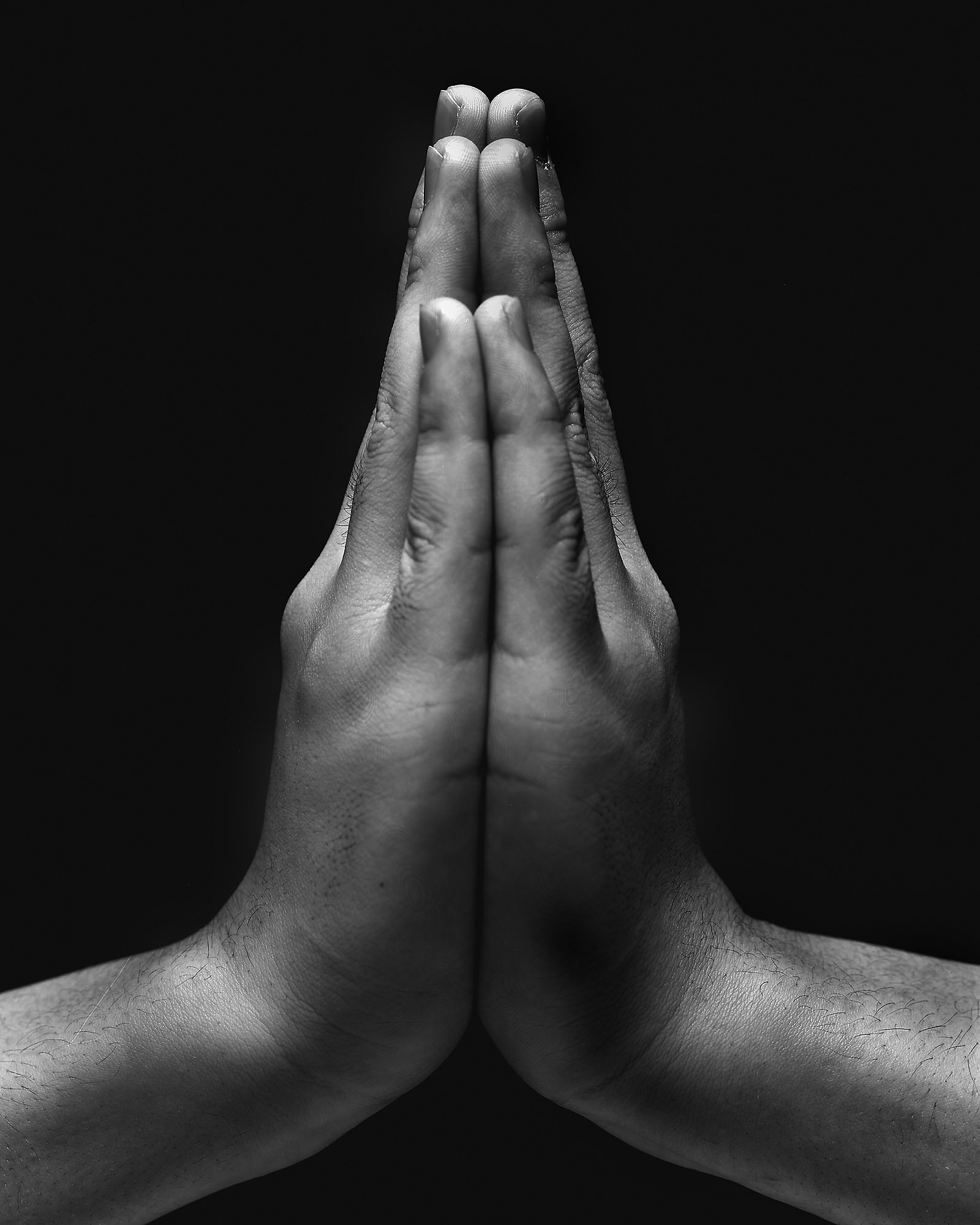Yasu Suzuka
Interaction
Nov 5 - Dec 10, 2004
Photo Gallery International
-

©Yasu Suzuka
Around 30 works in between 1987 to2004 including platinum prints of recent works as well as previousworks are exhibited.
Yasu Suzuka mentioned about his work as below:
I think that the “section” that best symbolized the personalityof a man’s form is hands.
This was more than 15 years ago, when I was invited to a groupshow entitled “Section”. I photographed the hands of a Buddhistmonk I had become acquainted with, and this became the first workin a series of clasped hands in prayer, where I photographed the hands ofvarious peoplesymmetrically based on a concept of Opposite Poles, which I amalways conscious of.
Then I started a second series, photographing a femalefriend ofmine as a model. I had an image of lotus flowers in my mind.Supposing her hands clasped as the flowers in a sequence of bloominghands, I wanted tocreate an Oriental image of the spiritual world, in time andspace.
A few years later, I was attracted by the erotic form ofhands, and started a new version of the series with a professionaldancer as a model. I photographed her on Polaroid 8×10 film. The handswere clasped as in a form of repose, at the limit of physicalendurance – theoppositepole of motion. In another words, I tried to capture motion,as the opposite pole to repose.These two series representedin formopposite poles of asection against the whole, or repose for motion, while thefirst series expressed repose and the second series motion.
The collectionof works I am now presenting is the latest in the series of claspedhands in prayer. I conceived the idea when I was visiting the 88sacred sites of Shikoku, to take photographs of pilgrims for myprevious work, “Engi Mandala”.
I stood in front of each sacredplace to photograph a chain of people encountering, and saw mostvisitors clasped their handsand bowed before passing through the gate. Although Japanese aresaid to be religiousby people from other countries, not many of us in reality keepfaith in one religion in every aspect of daily life. When I talkedto people makinga tour of the temples, I found they had their own reasons for beingon a pilgrimage. There were people who worshiped Kukai, but mostof them werenot necessarily going on a pilgrimage for religious reasons. Itcould be a trip for a special occasion in their life, like Kanreki(60th birthday), or a journey for self-reflection or discovery. I noticed, however,it was an indication of a universal form of prayer that peopleare always claspingtheir hands at each sacred place. It reflects some religious significancein no doubt. Is it not a basic physical form people assume spontaneously,when they pray fervently? They are led peacefully into the spiritualworld with their hands clasped.
Photographing at the 88 sacred sites of Shikoku also gave me anidea of photographing, in black and white, the hands of Buddhistmonks related to Kukai. At the same time, I started taking Polaroidphotographs of ordinarypeople I was meeting in my everyday life. I had them clasp theirhands with their eyes closed. Clasping hands, either by monks inquite religious significance, or of ordinary people in their daily life, are the same form ofprayer – while they are standing at opposite poles. An image ofone universal formof prayer was created in the work titled “Mandala Hands Clasped”, putting these two opposite poles in contrast.
I had the monks placetheir hands flat together, as ordinary people do in their dailylife, not interlacing their fingers in the styleparticular to their sect of Shingon Mikkyo (the Shingon/Esotericsect) of Kukai. Iwanted to photograph the form of a prayer of a man, not a monk. Clasping hands is a universal and daily deed to ordinary people, while unusual tothe monks devoting their life to Buddhism. In this way of photographing, I thought the spiritual world of unusualness could be linked tothe usual world of ordinary people. Usualness and usual, thesetwo opposite polesconfined in permanent platinum prints are the works on display, this time under the title “Interaction”.
The theory of interactionis a principal that recognizes a casual sequence of mutual restrictionsbetween body and spirit. The claspinghands are a form realized at a point of contact of such oppositepoles, in a casualsequence of body and spirit, usualness and unusualness, sectionand whole, and repose and motion. The clasped hands exhibitedhere are all relatedin a casual sequence to their own series, and at the same timewith every other series.
Yasu Suzuka